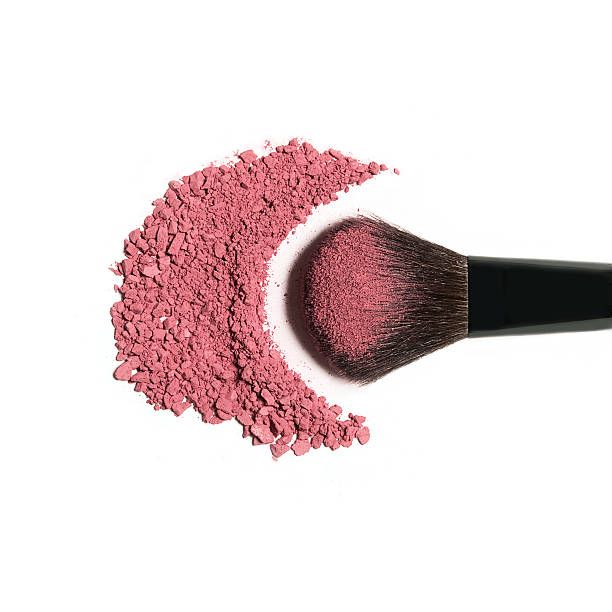I. Introduction
Overview of Blush in Makeup
Blush, an essential cosmetic product, has been a staple in beauty routines for centuries. Its primary purpose is to add a pop of color to the cheeks, enhancing the natural flush that health and excitement can bring to the face. More than just a color enhancer, blush plays a pivotal role in shaping and defining facial features. It can elevate a makeup look from ordinary to extraordinary by adding depth and dimension. With its transformative power, blush is not just about adding a rosy hue; it’s about creating an illusion of a well-rested, vibrant complexion.
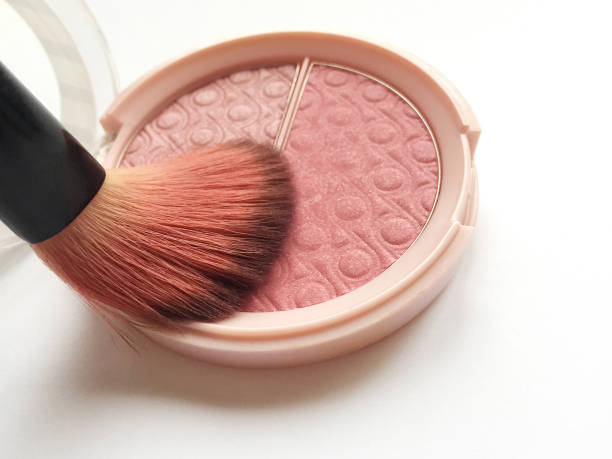
Importance in Beauty Regimen
In any beauty regimen, blush is more than an afterthought. It’s a dynamic tool that brings life to the face. Whether aiming for a subtle, natural glow or a bold, dramatic effect, blush can dramatically alter one’s appearance. Its importance lies in its versatility – it complements eye makeup, balances lip color, and ties the entire look together. Moreover, the right blush can elevate mood, boost confidence, and express personality. It’s a reflection of both personal style and the art of makeup itself.
II. The History of Blush
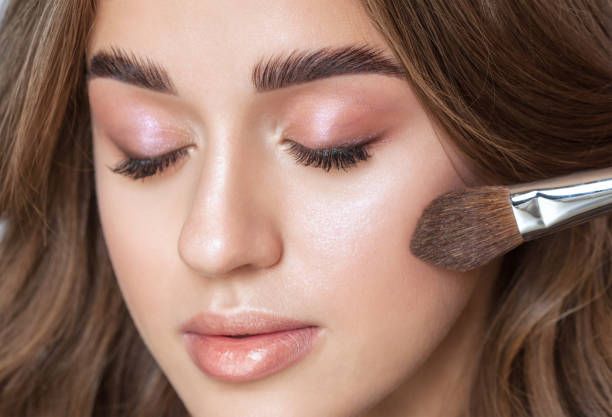
Ancient Times to Modern Era
Tracing its origins, blush has been in use since ancient times. Historical records show that both men and women in Egypt used red ochre to tint their cheeks, a practice that spread to ancient Greece and Rome. In the Middle Ages, the use of blush diminished under the belief that makeup was deceitful, but it resurged in the Renaissance, symbolizing youth and health. The Victorian era, however, saw a more subdued use, as a natural look was more favored.
Evolution of Ingredients and Application
Originally, blush ingredients included natural dyes from fruits and vegetables and even toxic substances like lead and mercury. Thankfully, the 20th century brought significant advancements in cosmetic chemistry, phasing out harmful ingredients and introducing safer, synthetic dyes. Application methods evolved, too, from rudimentary spreading with fingers to the use of specialized brushes and sponges, allowing for more precision and variety in looks.
III. Types of Blush
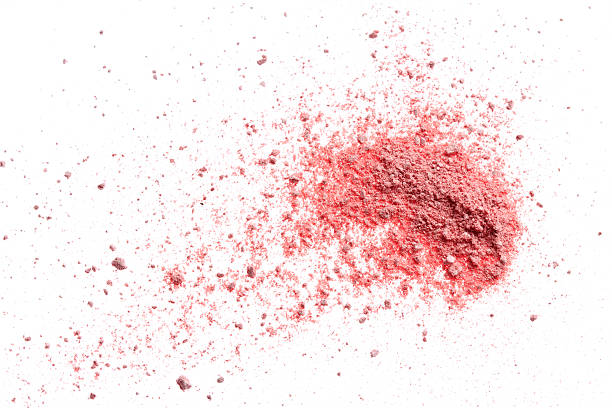
Powder Blush
The most traditional form of blush, powder blush, is known for its ease of application and suitability for most skin types. It’s ideal for achieving a matte finish and is excellent for layering over foundation. Powder blushes come in a range of pigments, from subtle to bold, catering to various preferences and occasions.
Cream Blush
Cream blush stands out for its creamy texture, providing a dewy finish perfect for dry skin. It blends seamlessly into the skin, offering a more natural look. The moisture-rich formula of cream blushes makes them ideal for mature skin, minimizing the appearance of fine lines.
Gel and Liquid Blushes
Gel and liquid blushes are the newer entrants in the blush family. Their sheer texture makes them perfect for a natural, flushed look. They’re particularly suitable for oily skin as they tend to have a longer staying power and resist caking.
Tint and Stick Formulas
Tint and stick blushes are for those seeking convenience and longevity. Tints offer a stain-like effect for a long-lasting flush, while stick formulas provide ease of application and portability. Both are versatile and can often be used on lips and eyes, making them perfect for a cohesive makeup look.
IV. Choosing the Right Blush for Your Skin Type

For Oily Skin
Individuals with oily skin should opt for powder blushes or gel-based formulas. These help absorb excess oil and offer a more matte finish, reducing the appearance of shine.
For Dry Skin
For those with dry skin, cream blushes are the best choice. Their hydrating properties add moisture, giving a healthy, dewy finish. They blend smoothly without accentuating dry patches.
For Combination Skin
Combination skin can benefit from a mix of powder and cream blushes. Powder blush can be used in oilier areas, while cream blush can be applied on drier parts to maintain an even, balanced look.
For Sensitive Skin
Those with sensitive skin should look for hypoallergenic and fragrance-free formulas to minimize irritation. Mineral-based powder blushes are often a safe choice, offering gentle color enhancement without harmful additives.
V. Selecting Blush Colors

By Skin Tone: Fair, Medium, Dark
Choosing the right blush color enhances natural skin tones. For fair skin, soft pinks, light corals, and peaches bring a healthy glow without overpowering. Rich pinks, warm mauves, and deep peaches complement medium skin tones. Dark skin tones can carry vivid oranges, rich berries, and deep reds that add a stunning pop of color.
Seasonal Color Choices
Seasons influence blush color choices. Spring calls for light, pastel tones like baby pink or lilac. Summer favors vibrant shades like coral or hot pink. Autumn is the time for richer hues like burnt orange or deep taupe and winter suits, rosy pinks, and deep plums.
Time of Day Considerations
Daytime makeup typically benefits from a more natural, subdued blush color, like light pinks or peaches. For evenings, more intense shades like deep rose or bronze can add drama and sophistication to your look.
VI. Application Techniques for Different Blush Types
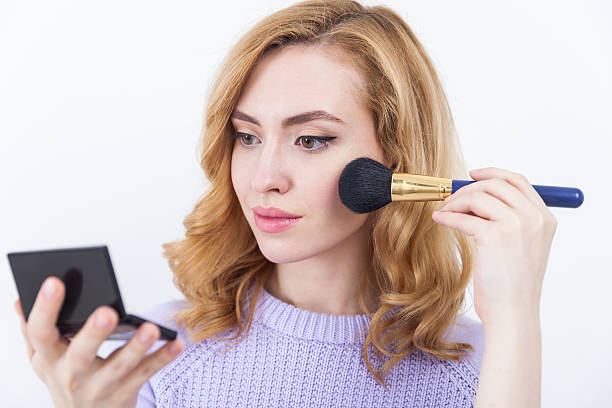
Techniques for Powder Blush
For powder blush, use a fluffy brush for a soft look or an angled brush for more defined cheekbones. Smile and apply to the apples of your cheeks, blending upwards towards the hairline for a natural effect.
Applying Cream and Gel Blushes
Cream and gel blushes work best when applied with fingers or a stippling brush. Start with a small amount on the apples of your cheeks, blending outward and upward. These formulas combine effortlessly, so building up the color gradually is critical.
Tips for Tint and Stick Blush
Tint blush requires quick blending to avoid harsh lines. Apply a few dots on the cheeks and blend immediately. Stick blushes can be swiped directly onto the cheeks and blended with fingers or a brush for a more controlled application.
VII. Blush and Face Shapes
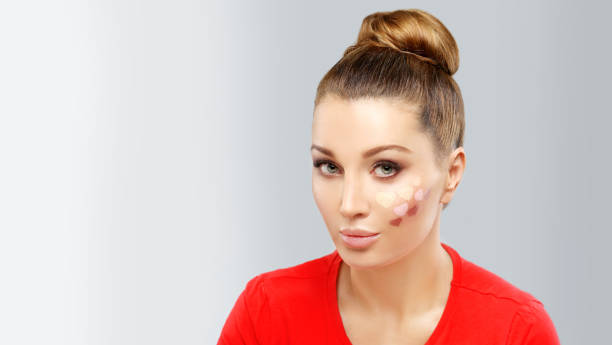
Identifying Your Face Shape
Recognizing your face shape is crucial for practically applying blush. The main shapes are oval, round, square, heart, and long. Each has specific characteristics that can be enhanced or balanced with the proper |blush| technique.
Blush Placement for Each Face Shape
- Oval faces benefit from blush applied on the cheekbones, sweeping towards the temples.
- Round fronts look best with blush applied slightly below the apples of the cheeks, blended towards the ears.
- Square faces are softened by using blush on the apples and blending out towards the temples.
- Heart-shaped mugs should apply blush below the apples, blending out towards the ears to balance the look.
- Long faces are shortened by using blush across the apples and slightly towards the nose.
VIII. Common Blush Mistakes and How to Avoid Them
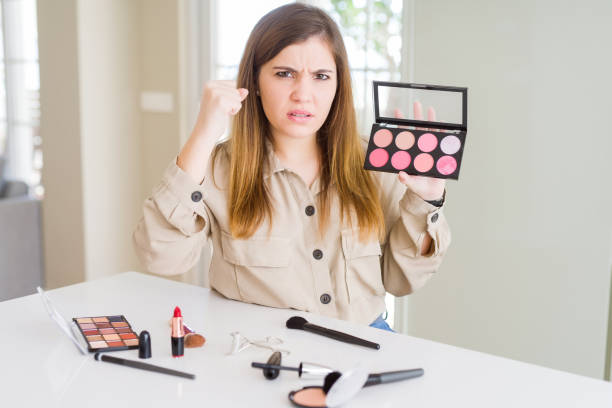
Over-application
Over-application of blush can be avoided by starting with a small amount and gradually building up the intensity. It’s easier to add more blush than to take it off.
Wrong Shade Selection
Choosing the wrong shade can be corrected by considering your skin’s undertone and the natural color your cheeks turn when flushed. Test different shades in natural light to find the perfect match.
Incorrect Placement
Incorrect blush placement can distort the face shape. Always consider your face shape and apply blush accordingly to enhance your features. Blending is critical to a natural and flattering look.
IX. Iconic trends through the decades
1960s to Present
The journey of blush in fashion is fascinating. In the 1960s, the trend was natural, with a subtle hint of color. The 1970s brought bronzed cheeks, reflecting the era’s sun-kissed aesthetic. The 1980s were all about bold, vibrant blush, often extending to the temples, while the 1990s toned it down with a more minimalist approach. The 2000s saw a mix of past trends, with a focus on a healthy glow.
Celebrities and Influencers
Celebrities and influencers have always played a pivotal role in popularizing blush trends. Icons like Marilyn Monroe and Audrey Hepburn set the trends in their time. At the same time, contemporary stars and beauty influencers continue to introduce new styles and techniques, often through social media platforms.
X. DIY Blush: Homemade Recipes

Natural Ingredients
Creating your blush is a fun and natural alternative. Common ingredients include:
- Beetroot powder for red hues.
- Cocoa powder for browner tones.
- Arrowroot powder as a base.
Step-by-Step Guides
- Choose your base and color ingredients.
- Mix the powders until you achieve your desired shade.
- For cream blush, add coconut oil to the mixture.
- Store in a clean container.
- Apply with a brush or fingers as you would with store-bought |blush|.
XI. Blush in Professional Makeup Artistry

Techniques for Photography and Film
In the realm of photography and film, blush plays a crucial role in defining facial features under various lighting conditions. Professional makeup artists often employ more saturated shades, as camera lighting and flash photography can wash out softer colors. The key is to apply blush in layers, gradually building up the intensity to achieve a look that is both natural and noticeable on screen. Additionally, the texture of the blush is essential. Matte blushes are typically preferred to avoid unwanted shine or reflection, especially under the bright lights of a studio or outdoor setting.
Bridal Makeup
Bridal makeup demands a delicate balance between natural beauty and lasting wear. |Blush| is an essential component in achieving this. For brides, the choice of blush is often dictated by the wedding theme, time of day, and personal style. A common technique is to layer a cream |blush| under a powder |blush|, which not only intensifies the color but also ensures longevity throughout the wedding festivities. The application is focused on creating a radiant, youthful glow that photographs beautifully and remains consistent over time. The blush tone is selected to complement the bridal attire and overall makeup palette, often leaning towards romantic pinks, soft peaches, or subtle bronzes to enhance the bride’s natural flush.
Techniques for Photography and Film
In professional settings, the blush application is adapted to lighting and camera work. Makeup artists often use more intense pigments to ensure the |blush| appears natural on camera.
Bridal Makeup
Bridal makeup emphasizes a long-lasting, photogenic look. Blush is applied to complement the overall makeup, ensuring the bride looks radiant throughout the event.
XII. The Future of Blush in Beauty

Emerging Trends
Recent trends indicate a move towards multi-purpose, natural products, with blushes serving as lip and eye colors, too. The emphasis is on organic and sustainable ingredients.
Innovations in Formulation
Future formulations of blush are expected to be more skin-friendly, with added skincare benefits like hydration and sun protection, blending makeup with skincare.
XIII. Reflecting on the Charm of Blush
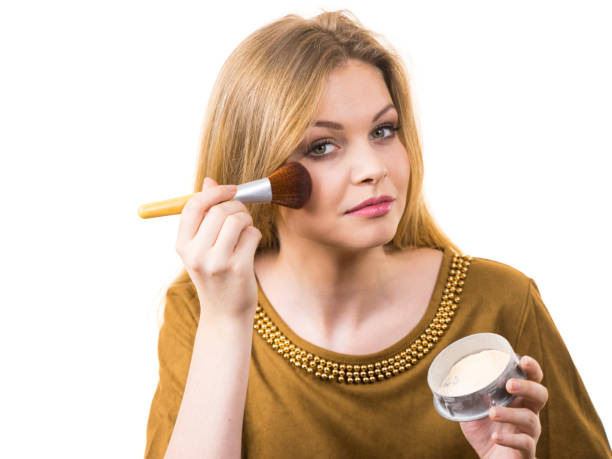
Recap of Key Points
|Blush| has evolved from a simple rouge to a versatile beauty product. Different types, shades, and application techniques cater to diverse beauty needs and preferences.
Final Thoughts on the Role of Blush in Makeup
|Blush| remains a staple in makeup, vital for enhancing natural beauty and expressing personal style. Its evolution and versatility make it an enduring favorite.
XIV. FAQs
Common Questions and Expert Answers
Q1: Can blush be used as eyeshadow?
A1: Yes, many blushes are safe to use on the eyes.
Q2: How do I choose the right blush shade?
A2: Consider your skin tone and undertone.
Q3: Can blush cause acne?
A3: Non-comedogenic formulas are less likely to cause acne.
Q4: How do I apply cream blush?
A4: Use fingers or a stippling brush for a natural look.
Q5: What’s the best blush for oily skin?
A5: Powder blushes or gel formulas work well.
Q6: How long does blush last on the face?
A6: It varies but generally around 5-8 hours.
Q7: Is blush suitable for mature skin?
A7: Yes, cream blushes are particularly flattering.
Q8: How can I make my blush last longer?
A8: Use a primer and setting spray.
Q9: Can men wear blush?
A9: Absolutely, blush is for everyone.
Q10: Is it necessary to use a blush brush?
A10: It’s recommended for powder |blush| for an even application.
XV. Resources and Further Reading
Books, Articles, and Websites
- “Making Faces” by Kevyn Aucoin
- “Bobbi Brown Makeup Manual” by Bobbi Brown
- Beauty blogs and websites like Sephora, and Beautylish
Online Tutorials and Workshops
- YouTube channels of makeup artists
- Online beauty courses on platforms like Skillshare and Udemy
Read also.. Are Sulfates in Beauty Products Harmful? A Comprehensive Exploration

